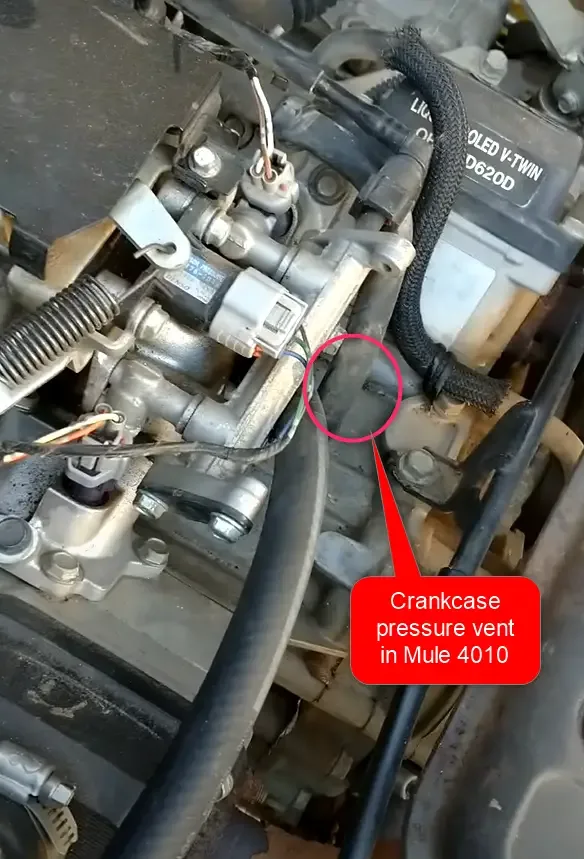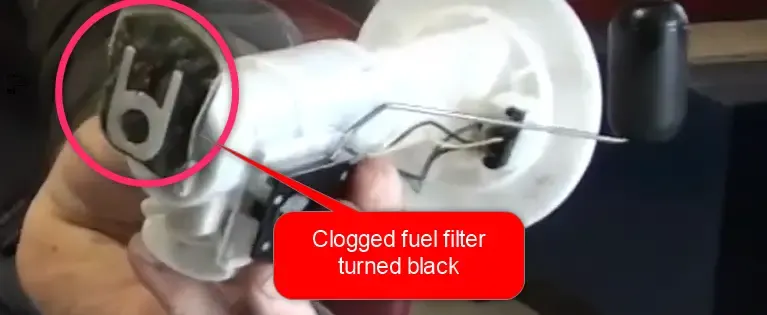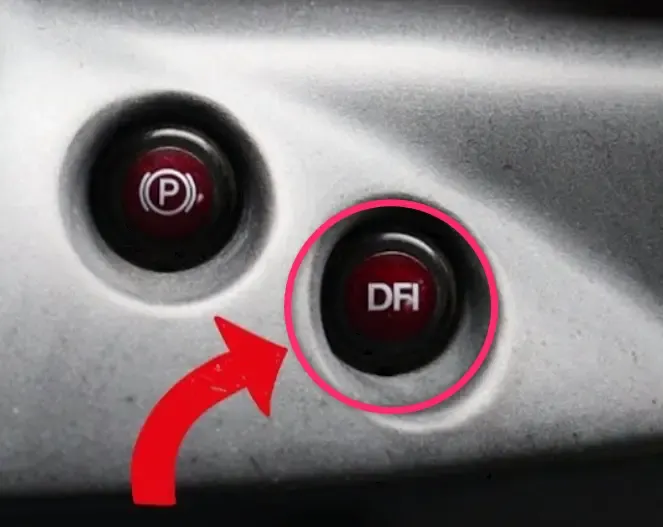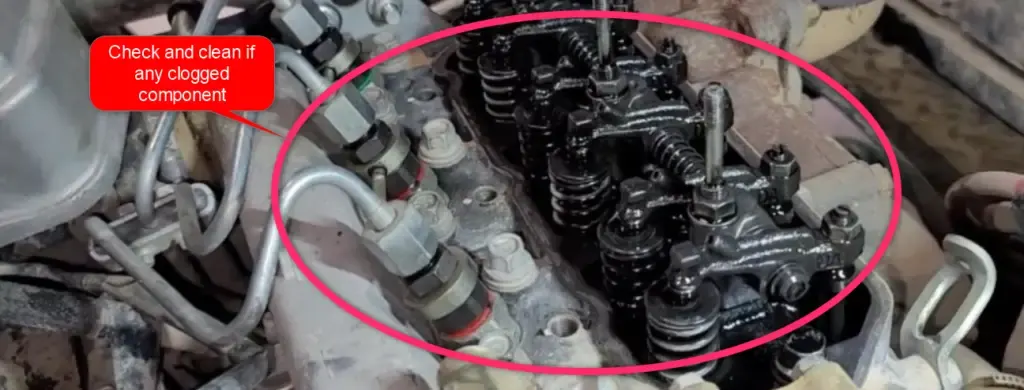Boasting a robust engine, durable build, and impressive performance, the Kawasaki Mule 4010 stands out as an excellent option for off-road enthusiasts. However, similar to any vehicle, it may encounter specific issues that can impact its performance and cause frustration.
The most common problems associated with the Kawasaki Mule 4010 include:
- Problems with idling
- Problems with the fuel pump
- Problems with gear shifting
- Problems with the throttle body and sensors
- Problems of over-heating
- Problems with DFI lights
- Power loss problem
- Problems of brake noise
In this article, I’ll look at some of the most common Kawasaki Mule 4010 problems and how to address them. So if you own a Kawasaki Mule 4010, read on to learn more about the potential problems you may face and how to tackle them.
Basic Features of Kawasaki Mule 4010:
Feature | Value/Type |
Engine type | Liquid cooled, 4-stroke Diesel, 3-cylinder OHV 4-stroke |
Displacement | 953cm^3 |
Maximum power | 17.7kW [24 PS]/3,600rpm |
Maximum torque | 52 N-m [5.3 Kgf-m]/2.800rpm |
Bore x stroke | 72 x 78 mm |
Tyre, rear | 23 x 11-10 (tubeless) |
Tyre, front | 23 x 11-10 (tubeless) |
Compression ratio | 24.8:1 |
Fuel system | Injection Denso VE type |
Final drive | Front limited slip differential, dual mode rear differential |
Transmission | 2 speed automatic plus reverse, 4WD |
L x W x H | 3,305 x 1,486 x 1,925mm |
Wheelbase | 2,165mm |
Wheel travel front | 100mm |
Ground clearance | 180mm |
Curb mass | 788 kg |
Fuel capacity | 24.2 litres |
Wheel travel rear | 70mm |
Now that you know the basic features of the Kawasaki Mule 4010, let’s jump to the problems and solutions.
1. Problems with Idling:
The idle issue in the vehicle is indicated by constant sputtering and stalling, which is common among the models of Mule vehicles, including the 4010.
The most common cause of idling issues with Mules is an excessive amount of oil in the crankcase. This is due to the engine being an industrial engine designed for running full throttle, full load, and 3500 RPM.
As Mules idle and putt around, the engine oil never gets hot enough to boil off the fuel/air mixture and byproducts that enter the crankcase. This build-up can cause idling issues.
The gummed throttle body can also cause idling issues in the Kawasaki Mule 4010. This issue arises due to the configuration of the throttle body assembly in which the crankcase directly vents to the air intake tubing.
The crankcase cannot vent to the atmosphere as per US EPA regulation, thus allowing oil vapors to enter the engine and gum up the throttle body.

It creates a gummy substance in the throttle body, disrupting the vehicle. Soot-like substances like carbon build up in the throttle body, further intensifying the issue.
How to Fix:
STEP 1- Removal of Throttle:
The first step in dealing with the idling problem is to remove the throttle body from your Mule 4010.
STEP 2- Scrub the Throttle Body:
Next comes the cleaning of the throttle body using a throttle body cleaner. You can spray the cleaner using a toothbrush or a scrub.
STEP 3- Removing the Buildup:
Use your finger to open the electronic throttle blade. Then, use a spray to clean the shaft-bearing area and remove all the buildup in the throttle body.
STEP 4– Re-installing the Throttle Body:
The last step is to hook up the electrical connections of the throttle body and check them before re-installing. Finally, turn the on position to check the throttle blade. After re-installing the throttle body, you can start your Mule 4010.
2. Problems with Fuel Pump:
Many users have reported issues with the fuel pump in Mule 4010. The problem is more likely to develop in the fuel filters rather than the pump itself. The accumulation of debris in the fuel filter is responsible for creating an issue in the pump.
This clogging can lead to a lack of lubrication which further delivers less coolant to the drive motor. As a result, it can lead to the failure of the drive motor and the vehicle’s fuel pump.
If this is the situation, the filter will typically turn black, dark gray, or red (if the dirt is red). Without lube and coolant, the pump will only last 5 minutes.

How to Fix:
Inspecting the fuel filters is recommended to ensure there is no dirt accumulation. You can use ethanol-free fuels, which have proven to have tremendous positive results.
However, the symptoms like idling issues in the vehicle, issues with speed and acceleration, and engine failure indicate the need for replacing the fuel filters. The problems in the fuel pump lead to disruption of the fuel pump.
To check the fuel pump pressure on Mule 4010:
- STEP 1: Remove the fuel line from the fuel rail
- STEP 2: Place the end of the fuel line into a measuring cup
- STEP 3: Turn the key to ‘ON’
- STEP 4: Measure volume
The measured volume should be more than 1.7 oz.
In addition, the extra blocking of fuel filters with dirt becomes unrepairable and can be resolved by replacing them.
3. Problems with Gear Shifting:
Some users notice a jammed gear stick causing trouble when attempting to downshift or upshift. This is especially noticeable when shifting from low to high or even high to reverse mode.
The first thought when experiencing this issue is that a faulty transmission mechanism causes it. However, the good news is that the transmission mechanism of the Kawasaki Mule 4010 is usually fine.
So what’s the cause of the gear shifting issues? In most cases, it’s simply a matter of insufficient lubrication. The transmission is designed to work smoothly with a lubricant designed specifically for the Mule 4010. If there is not enough lubricant or if the wrong type of lubricant is used, it can cause shifting issues.
How to Fix:
If there is an issue with gear shifting and the engine is in running condition, you can provide gas to the engine to shift the gears. It will help you to unstick the shift and will help to move the gear to the desired position.
If you experience being stuck during the gear shift when the engine is powered off, you can hold the brake to start the Mule 4010. It will help you to shift the gears after this attempt.
If the issue is due to lubricant, all you need to do to fix this issue is use the correct lubricant. You can find the proper lubricant in the owner’s manual or ask your local Kawasaki dealer for the right type of fluid. Once the correct fluid is applied, the issue should be resolved.
4. Malfunctioning of Throttle Body and Sensors :
One of the most common problems is with the throttle body and sensors. The throttle body and sensors can malfunction for several reasons, such as improper ventilation of the engine’s exhaust, build-up of carbon inside the throttle body, and a poorly-engineered CCV (closed crankcase vent) system and throttle assembly.
When the engine’s exhaust is not vented correctly, its oil vapors get stuck to the throttle body and sensors, making them greasy. This leads to a heaviness in the parts, which affects their performance.
The build-up of carbon due to tighter-than-spec intake valves also affects the throttle body and sensors, as it combines with the oil vapors and causes a problem.
How to Fix:
It is recommended to resolve this issue quickly compared to other vehicle problems. You can fix the issues of the throttle body by disconnecting the tube for the throttle body.
Clean and disconnect them before using a spray cleaner for the throttle body. It is better to spray this part when the engine is running. If the issue remains in the vehicle, the only option is to replace the throttle body.
All you have to do for a bad sensor is replace it with a new one. It's essential to get the correct type of sensor, as this will affect how well the engine runs. Of course, you can also get a good quality aftermarket sensor, but it can be pricey.
In such cases, Kawasaki offers a special kit to use whenever this issue arises. They have a kit for it. Ask your dealer for it. The 2013 and newer models had it done from the factory.
To fix the valve issue, you need to make some adjustments, and remember one is supposed to make the valve adjustment after every 200 hours to avoid the valve issue.
The valves should also be cleaned and lubricated regularly to ensure that they don’t rust or become corroded.
5. Problems of Over-Heating Under the Seats:
One of the most common issues faced by owners of the Mule 4010 is the problem of overheating under the seats. This issue is caused by unrestricted airflow towards the engine compartment, which is located beneath the floor.
The air vents assembled beneath the floor allow hot air to pass through, causing the heating up of the entire front seat region.
This problem can be especially vexing during the warm or hot seasons, as there is no factory-assembled heat protection shield to prevent excess heat. The lack of a heat protection shield means the whole seat area can become uncomfortable.
How to Fix:
The ideal solution is to install an aftermarket heat shield that can be purchased and installed easily. This will help to deflect the heat away from the interior of the vehicle, ensuring that the seats stay cool during the warmer months.
It is also a good idea to check the air filter regularly, as it can become clogged and restrict the airflow, leading to the same issue. Keeping the air filter clean and replacing it regularly ensures that the airflow is unrestricted and the risk of overheating is minimized.
6. Problems of DFI Lights:
Few users have reported that the DFI (Digital Fuel Injection) lights of their Mule 4010 would turn on due to several potential causes, such as:
- A defective Fuel Filter or Pump
- A malfunctioning Throttle Body or Sensor
- Contaminated or substandard Fuel
The DFI light can lead to running the limp mode, or the vehicle can lurch during a gear shift. The issue with the DFI lights arises due to the reasons mentioned below.

How to Fix:
- Fix 1: If a faulty fuel pump or filter is causing your DFI light to turn on, it’s best to take your Kawasaki Mule 4010 to the dealership, mainly if a warranty still covers it.
- Fix 2: If you’re not facing a long-term issue with the throttle body, try detaching the inlet hose and spray the throttle body with cleaner while the engine is running. This might help remove any sticky residue before it builds up and requires a new part.
- Fix 3: Lower-grade fuel can lead to costly engine problems, with the added stress on the fuel pump from a blocked filter. To avoid this, owners should invest in better-quality fuel or use an octane booster.
- Fix 4: The failure in the ignition coil can also create problems in DFI lights. It is better to test the front and rear coils of the vehicle using a spark tester. If a tester produces a limited or no spark, it indicates an issue, and it is better to replace the coil. You can purchase a new one or get it fixed in case of a minor error.
- Fix 5: The electrical issues with the Mule 4010 can lead to the position of DFI lights. Electrical problems can occur when the vehicle gets wet due to sudden rain or exposure to moisture. You can use an electronic cleaner to clean your vehicle and then start the vehicle. Try to restart the vehicle above the idle speed for about 5-10 minutes and repeat this process several times to fix this issue.
7. Power loss Problem:
Unfortunately, some Kawasaki Mule 4010 owners have encountered significant power loss and acceleration decline after running the Mule 4010 for a few hundred hours.
The cause of this power loss could be a couple of different things. It could be due to the fuel pump not working, or a blockage could cause it in the fuel lines. It could also be caused by the engine spark being off the mark.
However, fuel is the most common cause of power loss in the Mule 4010. If the fuel is of poor quality, it can cause the fuel filters to clog and obstruct the fuel and airflow. This can cause the Mule 4010 to struggle to climb hills, even when using low gear.
This can also happen due to the battery not having enough charge or not being connected properly. If the battery isn’t performing well, you should take it to a professional for servicing.
How to Fix:
To prevent any power loss in your Kawasaki Mule 4010, you must maintain it regularly. This will ensure that all the components of your Mule 4010 are in good working condition.
Periodically check the fuel lines and filters, and replace them if they get clogged.

It’s also essential to ensure that you use quality fuel in your Mule 4010. If you are using substandard fuel, then it can cause power loss due to the filters getting clogged.
Finally, make sure that you are connecting the battery of the Mule 4010 properly. If you don’t connect the battery properly, you could experience an electrical power loss.
8. Problems of Brake Noise:
A loud squealing or chirping sound can be heard even when the brakes are not engaged. It’s one of the most common issues reported by Mule 4010 owners, but luckily it’s not a huge problem to fix.
The squealing noise you hear results from a buildup of brake dust on the brake pads. The dust is a grinding agent between the brake pads and the rotors, producing a squealing noise. The easiest way to fix this issue is to replace the brake pads.
How to Fix:
The first step is to inspect the brake pads. If the pads are worn down, have chunks missing, or have a glazed appearance, then it’s time to replace them.
The best way to replace the pads is to take your Mule to a certified Kawasaki dealer or professional mechanic. They’ll be able to recommend suitable places for your SxS and install them for you.
However, looking at the aftermarket tires before replacing the brake pads is better. The brake pads are designed to handle the large tires of the vehicle so that they do not wear out faster.
Pros and Cons of Kawasaki Mule 4010:
Pros | Cons |
Kawasaki Mule 4010 is considered an excellent vehicle that gives incredible performance. | The brakes of the Kawasaki Mule 4010 are poor in performance and are not up to the mark. |
There is green technology in this vehicle which makes it a perfect choice. | The performance of the air conditioner is poor in this vehicle. |
This vehicle's fuel efficiency range is excellent compared to other vehicles. | The turf tires of this vehicle are more prone to wear away than other vehicles. |
This vehicle has plenty of space for storing and hauling extra items and is easy to drive. |
|
This vehicle's V-twin engine is considered an excellent option for generating more power. |
|
Final Thought:
The Kawasaki Mule 4010 is a dependable and powerful vehicle suitable for a full day of work. In addition, it has an impressive towing and cargo capacity.
However, it has its limitations. To get the most out of this model, it is recommended to be aware of the issues it could face and take precautionary measures to prevent them from occurring.
Also Read:
Kawasaki Mule Pro FXT: How to Fix the Most Common Problems
8 Most Common Problems with Can-AM Outlander 570- How to Fix
7 Common Polaris RZR 800 Problems- How to Fix Them
8 Common Yamaha Rhino 660 Problems- How to Fix Them
7 Common Coleman 550 UTV Problems- How to Fix
9 Most Common Massimo UTV Problems & How to Fix Them
Top 7 Honda Pioneer 1000 Problems and Fixes
8 Most Common Can-Am Maverick Sport Problems- How to Fix
Frequently Asked Questions (FAQs):
How can we make the Kawasaki Mule 4010 work faster?
The best way to increase the speed of the Kawasaki Mule 4010 is to ensure that the vehicle tires are inflated. The flat tires of the vehicle slow down the speed, so it is better to keep an eye on the tires as it helps to reach fast.
Which engine is used in Kawasaki Mule 4010?
A V-twin engine with 617cc is used in Kawasaki Mule 4010. Mule 4010 is a side-by-side vehicle that depends on a 617cc engine. It runs on a liquid-cooled and four-stroke engine that generates a smooth torque.
Is there a belt in Kawasaki Mule 4010?
An HP belt in Kawasaki Mule 4010 fits best in all side-by-side vehicles. This HP and ATV belt allows a person to deliver smooth and dependable drive for the riders.
Is there a power steering in Mule 4010?
There is a selectable 4WD and dual mode with rear differential and differential lock in the vehicle. In addition, the EPS, called electric power steering, is also present in Mule 4010.
What is the worth of the Kawasaki Mule 4010?
The base price of Kawasaki Mule 4010 is $10,199, while the average retail price is $8300.
Where is the engine of the Kawasaki Mule 4010 mostly made?
The engine of the Kawasaki Mule 4010 includes Pro-FX and Pro-FXT editions. These are manufactured at the Kawasaki plant located in Lincoln.
Is there a water pump in the Kawasaki Mule?
There is a water pump in the Kawasaki Mule and two gaskets. The water pumps fit well on almost all models of Mule, along with a V-twin gasoline engine.
Is there engine braking in the Kawasaki Mule?
A person can transfer the engine’s performance to the ground due to CVT transmission in a vehicle having 48 lb-ft torque. In addition, the CVT transmission has natural engine braking, which is helpful during descending slopes and valid for increasing the driver’s confidence.
Are the Mule vehicles equipped with power steering?
Mule vehicles have EPS (Electronic power steering) systems in them having rear differential mode. These vehicles have selectable 2WD and 4WD modes with CVT transmission.
Do the Kawasaki Mule vehicles generate heat?
The Kawasaki Mule vehicles generate heat excreted directly from the coolant lines. It sometimes becomes uncomfortable for the person to bear this heat.
Is there engine braking in Kawasaki vehicles?
A specially designed CVT transmission in the Kawasaki Mule helps transfer the engine’s performance. It is designed to generate a torque of 48 lb. ft. The CVT in the vehicle offers natural engine braking to a vehicle, which helps descend the slopes and increases the driver’s confidence.
Is there a water pump in Kawasaki Mule 4010?
There is a water pump and two gaskets in the Kawasaki Mule 4010. These both parts can fit in the models of Mule, including the 3010, 3020, 4000, 2500, and 4010, along with the V-Twin gasoline engine of the vehicle.
Why is there a shortage of Kawasaki Mule vehicles in the market?
There is a shortage of Kawasaki vehicles in the market as the manufacturers produce fewer units.
How much horsepower is handled by the V-belt of the vehicle?
The classic V-belt of the vehicle can handle up to 500 horsepower.
What is meant by Mule in the Kawasaki Mule?
The word Mule in Kawasaki Mule 4010 stands for Multi-Use light equipment. It is designed as a hardworking UTV and has been produced since 1988.

This is Surya. I am an experienced off-roader. I have been off-roading for many years across several terrains. I am passionate about 4×4 driving and want to share my knowledge and experience with others.
My goal is to provide you with the most comprehensive and unbiased information about off-roading.
I curated this article through my personal experience and expertise, and I hope it helps you with what you are looking for.

 (+91)9123743026
(+91)9123743026
 24/1 Nibedita Sarani. M.B. Road, Kolkata- 700051, India
24/1 Nibedita Sarani. M.B. Road, Kolkata- 700051, India